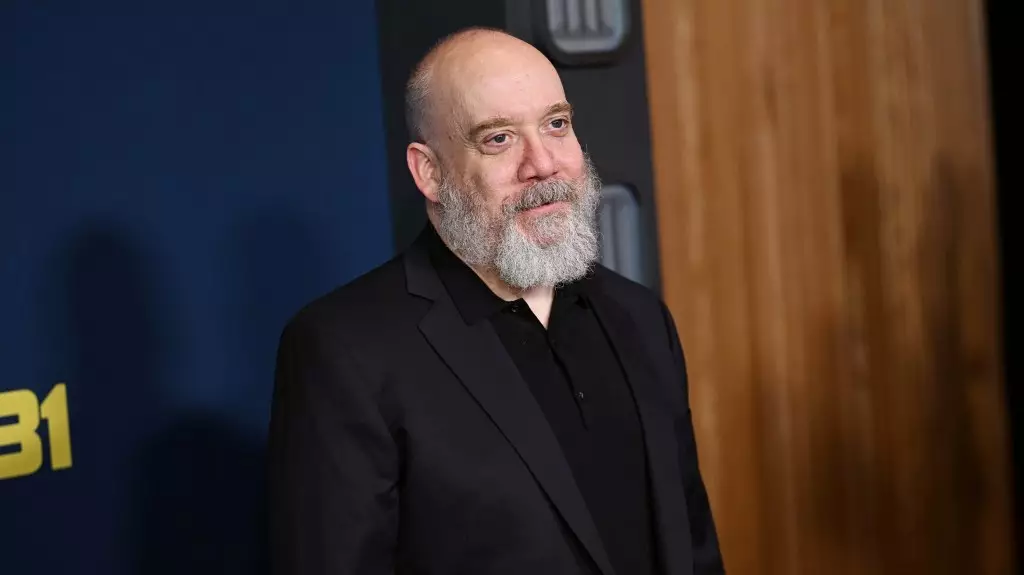As fans eagerly await the release of *Downton Abbey: The Grand Finale*, the air is thick with emotion and nostalgia, especially following the passing of the esteemed Dame Maggie Smith. The spirit of her character, Violet Crawley, the Dowager Countess of Grantham, looms large over this cinematic endeavor. Paul Giamatti, who reprises his role from the beloved series, recently candidly shared his thoughts on this evocative moment in the show’s legacy. His reflections cast a somber yet beautiful sentiment that resonates not just with the cast, but with audiences worldwide.
The poignancy of mourning a beloved matriarch, both in the narrative and in real life, adds layers of depth to the film. It’s as if the characters and the actors are intertwined in their grief, creating a tapestry of shared experience that elevates the storytelling. Giamatti remarked, “Not having her there is obviously a huge loss, but everybody was still acting in her spirit.” This harnessing of shared grief may feel like a true homage, but it also raises critical questions about the nature of storytelling in the face of real-life loss. Are audiences prepared to witness this convergence of fiction and reality, where mourning the character becomes a reflection of mourning the actress?
The Surprising Return of Harold Levinson
Paul Giamatti’s unexpected involvement in *Downton Abbey 3* serves as a potentially transformative plot twist. Initially surprised by the offer, Giamatti pondered, “I don’t have an important character in this story.” However, he soon came to understand that even seemingly minor roles can bear significant weight. This exemplifies the pulse of *Downton Abbey*—the careful threading of ensemble characters into rich narratives. While Giamatti may have thought his presence was insignificant, his return reflects a larger truth about the ensemble nature of storytelling: every character, every actor matters in crafting the overall narrative.
The casting choices themselves also speak to the show’s legacy of inclusivity and character depth. Giamatti joins a stellar cast of both new and returning actors, each bringing their own flair to a world that has captivated millions. This ensemble cast mirrors the diverse fabric of society itself, making the return to Downton feel like a reunion rather than just a simple sequel.
A Meaningful Tribute to Dame Maggie Smith
Bringing actors together to honor the late Dame Maggie Smith is a noble ambition but also a formidable challenge. Executive producer Gareth Neame echoed these sentiments when he acknowledged the added poignancy brought about by Smith’s passing. As the characters navigate their own loss in the storyline, the actors themselves become vessels of grief, touching viewers in a profoundly emotional way. This duality raises the stakes; it’s not just about telling a story anymore—it’s about claiming space to grieve collectively.
Moreover, as the narrative dives deeper into themes of loss, legacy, and honor, one can analyze the ethical dimensions of crafting media that pays homage to real lives cut short. Are filmmakers ethically bound to ensure that any representation is done with care? Giamatti and Neame seem committed to that ethical storytelling. Striking the balance between fiction and tribute, they aim to create a film that resonates authentically, rather than simply appropriating sorrow for entertainment.
A Legacy that Transcends Time
As *Downton Abbey* continues to evolve, the influence of its past remains irrefutable. With each new installment, the show revitalizes conversation around class, identity, and community. The upcoming film stands as a testament to the powerful legacy of Dame Maggie Smith, who not only shaped her character with wit and depth but also influenced the lives of viewers and fellow actors alike. Her absence is felt deeply; it reminds us that art, especially in series that touch upon the human condition, is a dialogue between generations, experiences, and emotions.
In this regard, *Downton Abbey: The Grand Finale* seems poised to leave a lasting impact, not just as a cinematic piece, but as a cultural milestone that resonates with our collective memory. By offering a window into grief and longing, it becomes more than just a tribute—it transforms into a shared celebration of the intricate connections we forge through storytelling. As we await its theatrical release, it’s clear that this is not simply another chapter closed on the franchise but perhaps a new beginning in how we remember those we hold dear.


Leave a Reply